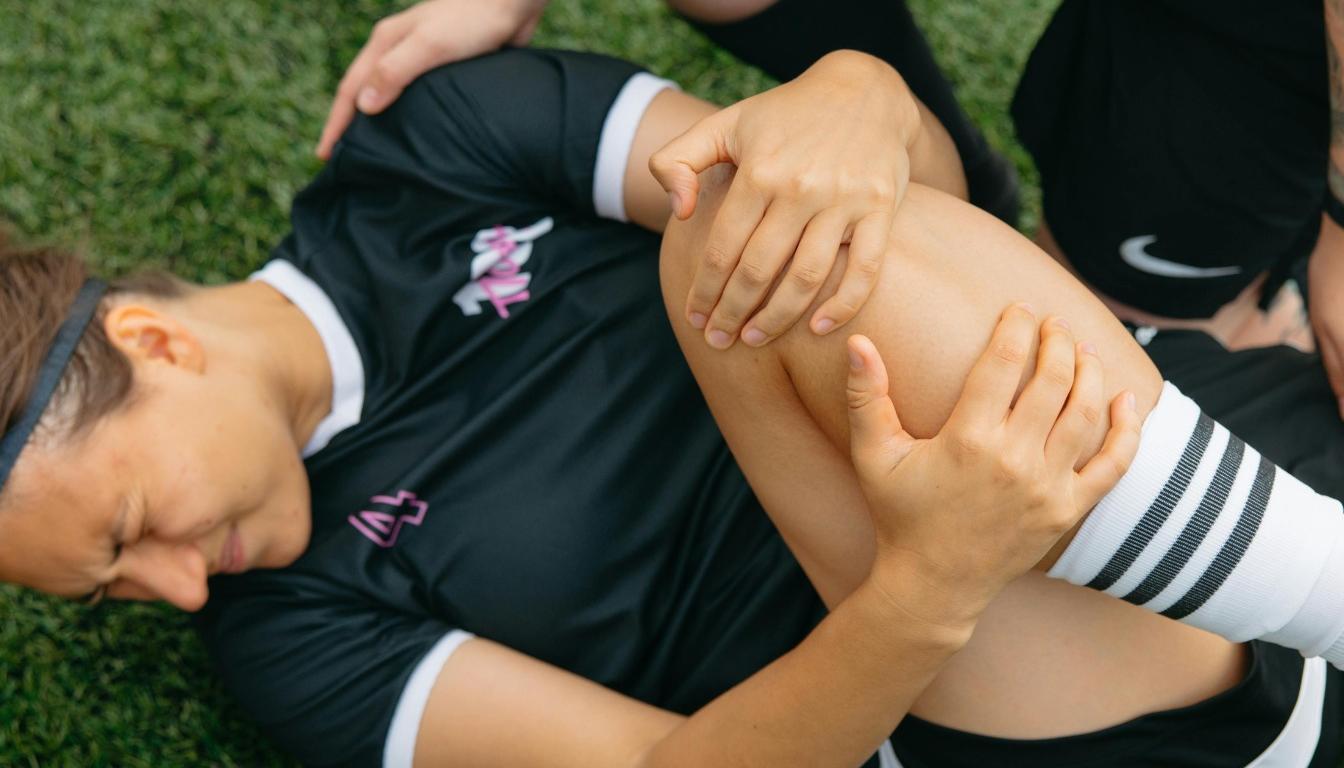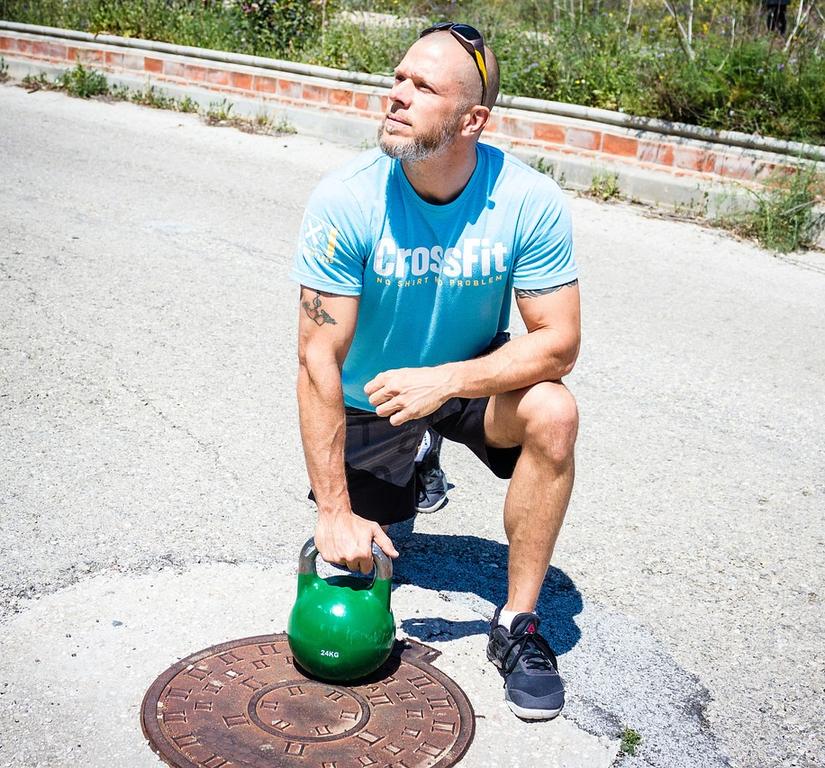
OPTIMAL TREATMENT FOR ACL TEAR
An ACL tear is one of the most common knee joint injuries. It usually occurs due to sudden twisting movements, abrupt stops, or unfortunate falls – especially in sports such as soccer, handball, basketball, or skiing. However, traffic accidents or everyday situations can also lead to such a tear. The anterior cruciate ligament is particularly affected, playing a central role in the stability of the knee joint. The injury has serious effects on the function and resilience of the knee. Therefore, accurate diagnosis and individually tailored therapy are crucial.
- 1. What is an ACL and what is its function?
- 2. How does an ACL tear occur?
- 3. What complaints occur after an ACL tear?
- 4. How is an ACL tear diagnosed?
- 5. What therapy options are available?
- 6. How does an ACL surgery work?
- 7. What is important after the treatment?
- 8. Frequently asked questions about ACL tear
1. What is an ACL and what is its function?
There are two cruciate ligaments in the human knee: the anterior and the posterior. They run inside the knee joint and cross each other – hence their name. These ligaments secure the movement of the knee in the longitudinal and rotational directions. The anterior cruciate ligament prevents the tibia from sliding forward relative to the femur. It also controls the rotational movement of the knee joint. The posterior cruciate ligament, on the other hand, protects against the tibia sliding backwards – especially when the knee is bent. Together, they form a central stabilizing organ for the knee and ensure physiological power transmission between the upper and lower leg. If one of the two ligaments is injured, it can lead to instability, which in the long term endangers the menisci and articular cartilage.


2. How does an ACL tear occur?
An anterior cruciate ligament tear typically occurs with abrupt changes in movement – for example, with rapid turns with the foot fixed, with hyperextension of the knee, or with sudden stopping. These movements are particularly common in sports. Those affected often report an audible cracking sound, severe pain, and a rapidly developing swelling of the knee. Posterior cruciate ligament injuries, on the other hand, are more likely to occur with direct impact trauma – such as in traffic accidents or when falling on a bent knee. In both cases, the ligament is either partially or completely torn, which leads to instability and limited resilience.
3. What complaints occur after an ACL tear?
A typical symptom is the immediate swelling of the knee, often accompanied by a feeling of instability – especially when walking on uneven ground or when changing direction. Many patients experience the knee giving way or a lack of confidence in the joint. Depending on the extent of the injury, pain, restricted movement, and limited resilience can also occur. There is often uncertainty when climbing stairs or a feeling as if the knee “gives way”.
4. How is an ACL tear diagnosed?
At MVZ Restart-Ortho, the diagnosis of an ACL tear is initially clinical – through targeted function tests such as the Lachman test (for the anterior cruciate ligament) or the Pivot-Shift test (to assess rotational instability). In addition, instrumental measurement methods can be used, such as a so-called “Lachmeter”. Magnetic resonance imaging (MRI) provides exact images of the ligament structures and shows the extent of the injury as well as possible accompanying injuries, e.g. to the menisci or cartilage. For the assessment of posterior cruciate ligament tears, a special X-ray in 90° flexion (“held image”) is also used. The combination of these methods enables a precise assessment of the injury and forms the basis for further therapy planning.
5. What therapy options are available?
The treatment of an ACL tear depends on the severity of the injury, the type of ligament affected (anterior or posterior cruciate ligament), the patient’s activity level, and the individual life situation. A basic distinction is made between conservative and surgical therapy.
Conservative therapy
Especially with posterior cruciate ligament tears, surgery can often be avoided. In these cases, a special splint – the so-called PTS splint – is used. It brings the tibia back into the correct position and must be worn consistently for four to six weeks. During this phase, accompanying physiotherapeutic treatment is carried out to stabilize the knee joint. Following the splint treatment, healing is checked again using clinical tests and imaging procedures. If there is sufficient stability, conservative treatment can be continued. Otherwise, surgical intervention is necessary.
Operative therapy
For anterior cruciate ligament tears, especially in physically active patients or with significant instability in everyday life, surgical reconstruction is usually recommended. At MVZ Restart-Ortho, proven, modern techniques are used. During the operation, the torn ligament is replaced with the body’s own tendon material – often the semitendinosus tendon or the quadriceps tendon. In more complex cases, accompanying injuries are also treated, such as to the collateral ligaments, cartilage, or bony malpositions (e.g. correction of the leg axis or the tibial glide angle).
So-called revision procedures – i.e. repeat operations in the event of another tear or an insufficient result from a previous operation – are also part of the range of services offered by the specialized knee team. The surgeons have many years of experience, regularly undergo further training and are active as speakers at specialist congresses.
6. How does an ACL surgery work?
The procedure is usually performed minimally invasively using arthroscopy (keyhole surgery). After removing the body’s own tendon material, it is prepared and inserted in place of the torn cruciate ligament. The new ligament is precisely positioned and anchored in the bone using modern technology via small accesses. The procedure usually takes about an hour and can often be carried out on an outpatient basis. Thanks to modern surgical methods, the stress on the surrounding tissue is low, which supports faster recovery.
7. What is important after the treatment?
How long does rehabilitation take after a cruciate ligament rupture?
The duration of rehabilitation depends on the extent of the damage and the treatment chosen, but usually takes several months. The aim is to fully restore the mobility, stability, and resilience of the knee joint. A return to sporting activities takes place gradually and under medical supervision—for competitive athletes, this often involves close coordination with sports medicine and physiotherapy.
What does the rehabilitation program cover?
The rehabilitation program includes passive and active mobilization, muscle building, coordination training, and training in joint-friendly behavior in everyday life. It begins early after the conservative or surgical phase and is tailored to the individual patient. The goal is a gradual increase in stress until the joint is fully functional.
8. Frequently asked questions about ACL tear
How long does it take to heal after a cruciate ligament rupture?
The healing time depends on the type of treatment. After surgery, the rehabilitation period is approximately six to nine months. With conservative therapy, it can also take several months to regain full strength.
When can I start exercising again?
A return to sports is possible after six months at the earliest, depending on individual healing and the success of therapy. High-impact sports require particularly careful follow-up care.
Is surgery always necessary?
No. Conservative treatment may be sufficient, particularly in cases of posterior cruciate ligament tears or minor instability.
Does health insurance cover the costs of treatment?
As a rule, yes—both for conservative therapy and for surgery, provided that it is medically indicated. You will receive detailed information during a personal consultation.
When should you contact us?
If you are experiencing instability, swelling, or pain in your knee after an accident, or if you suspect you have torn a cruciate ligament, MVZ Restart-Ortho is the right place for you. We also offer comprehensive diagnostics and personal consultation for recurring symptoms after surgery or in cases of unclear healing progress. Our goal is not necessarily to operate on you, but to help you regain your full performance capacity. We provide you with unbiased advice and work with you to develop the best possible treatment plan.
Aftercare schemes
PDF ACL tear aftercare
